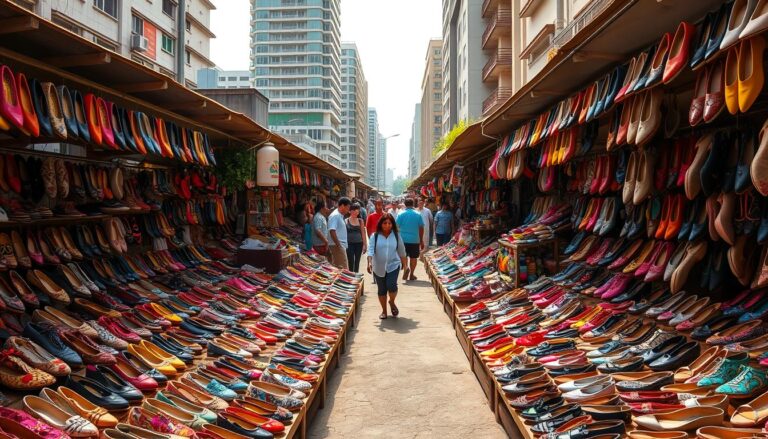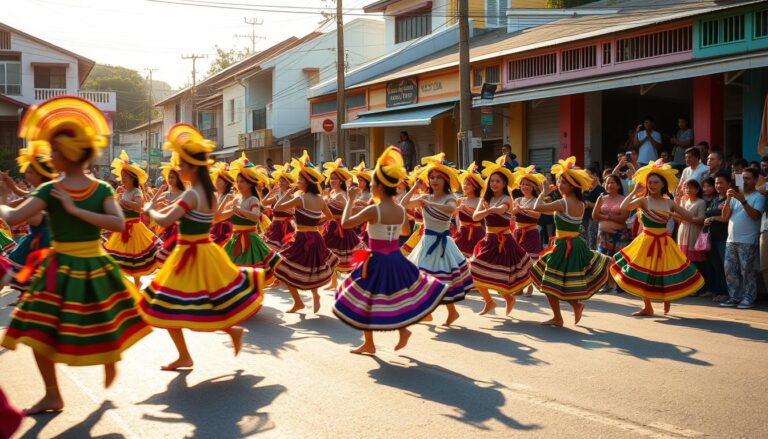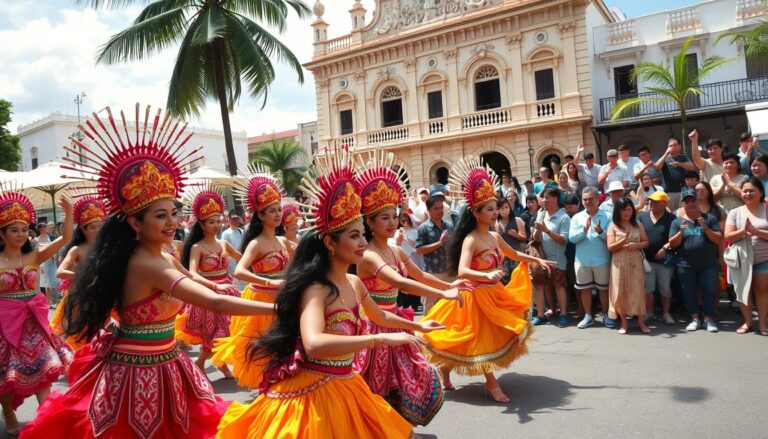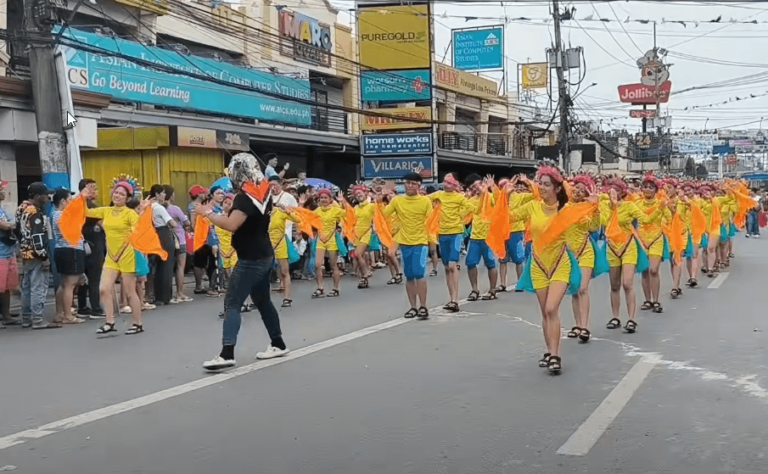Sibug Sibug Festival: Zamboanga Sibugay Sibug Sibug Festival Highlights
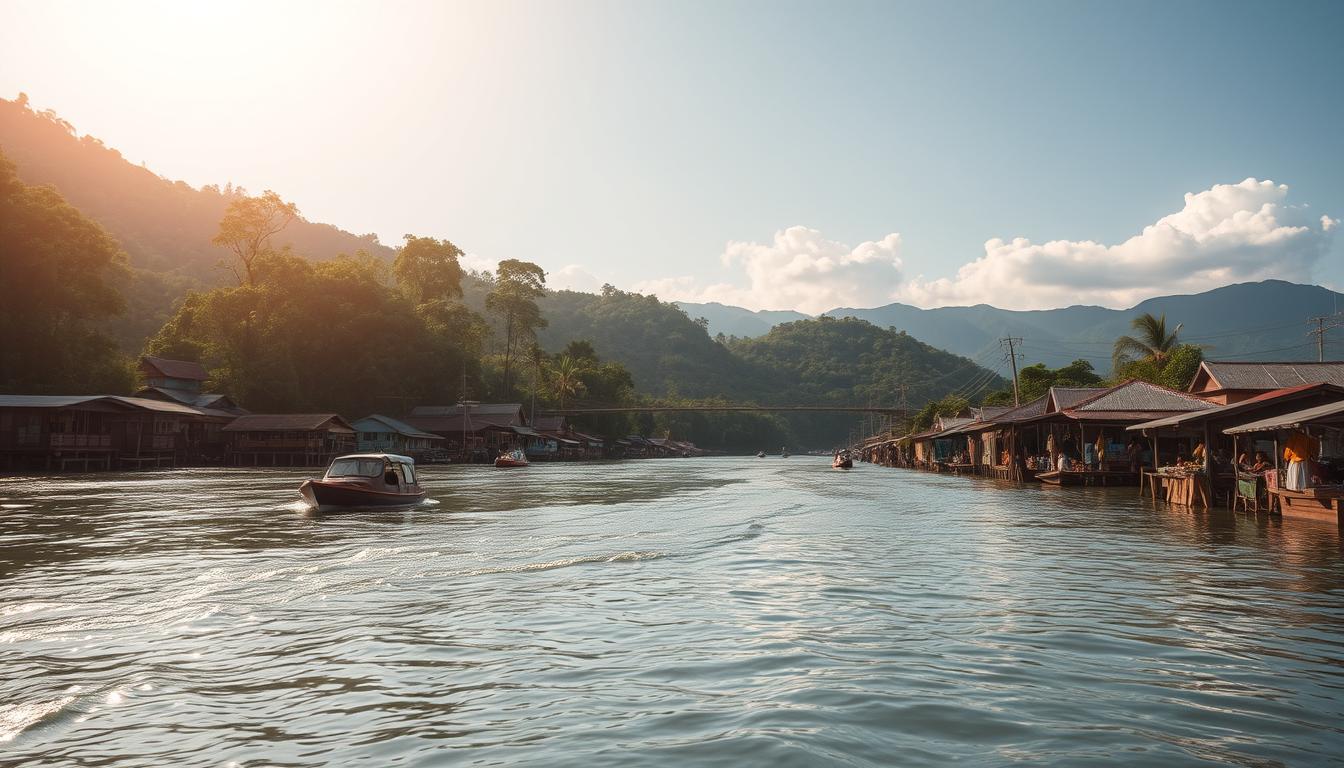
Every February, the province of Zamboanga Sibugay comes alive with a vibrant celebration of its history and culture. This annual event marks the province’s founding anniversary while honoring its rich heritage through a fusion of traditions and modern festivities. Locals and visitors gather in Ipil, the provincial capital, to experience a week-long series of activities that blend indigenous rituals, lively performances, and culinary showcases.
The celebration coincides with the Festival of Lights, creating a dazzling backdrop for street dances that depict harvests, weddings, and healing rituals. Highlights include a kilometer-long grill featuring the region’s famous talaba (oysters), symbolizing the area’s coastal abundance. Trade fairs and sports competitions add to the energetic atmosphere, making it a must-see for those exploring Filipino culture.
Established in 2001, Zamboanga Sibugay uses this event to showcase its unique identity. From ethnic performances to culinary adventures, the festivities reflect the province’s journey from its founding to its present-day vibrancy. Upcoming sections will delve deeper into specific events, local delicacies, and travel tips for future attendees.
Key Takeaways
- Annual celebration in February marking Zamboanga Sibugay’s founding anniversary
- Features indigenous rituals, street dances, and oyster-themed culinary events
- Centered in Ipil, the province’s capital city
- Coincides with the Festival of Lights from November to February
- Showcases local traditions through competitions and cultural performances
Introduction to the Sibug Sibug Festival
For eight days each February, the streets of Ipil transform into a living museum of heritage and innovation. This annual gathering commemorates Zamboanga Sibugay‘s 2001 establishment while honoring its coastal roots and diverse communities. Locals call it a “cultural handshake,” where ancestral practices meet modern creativity.
The event’s week-long format ensures every aspect of provincial life gets spotlighted. Mornings begin with indigenous Subanen chants, while afternoons pulse with motocross races and oyster-shucking contests. Evenings glow with lantern parades reflecting the area’s Festival of Lights traditions.
What makes this celebration unique is its layered storytelling. Street dancers reenact harvest rituals in costumes woven from abaca fibers, then later groove to electronic remixes of folk tunes. A kilometer-long grill sizzling with fresh seafood symbolizes both culinary heritage and economic ambition.
Through these activities, the province reinforces its identity as a cultural crossroads. Visitors leave not just entertained, but connected to the land’s journey from quiet fishing villages to a thriving regional hub.
Sibug Sibug Festival: History and Evolution
The heartbeat of Zamboanga Sibugay’s cultural identity flows through its namesake river. This annual event traces its roots to the Sibuguey River, a life source shaping both geography and traditions. Early settlers relied on its waters for survival, while its shifting currents inspired the term “sibug-sibug”—meaning “to shift direction” in local dialects.
Origins and Name Derivation from the River Sibuguey
Named after the winding Sibuguey River, the celebration honors how the waterway guided ancestral communities. Indigenous groups like the Subanen used the river for trade and rituals, embedding its significance into regional folklore. Street dances today feature warriors with bamboo shields, echoing historical defenses against invaders.
Rebranding and Restoration Timeline
In 2004, the event gained global attention with a Guinness World Record attempt for the longest oyster grill—a 1.2-kilometer showcase of coastal bounty. This milestone boosted tourism by 40% within two years. By 2012, organizers rebranded it as Sibugsay sa Sibugay Festival to emphasize progress, but revived the original name in 2013 to preserve heritage.
“Our festival’s changes mirror the river—adapting to new currents while staying rooted in its source.”
| Year | Milestone | Impact |
|---|---|---|
| 2004 | Guinness oyster grill attempt | International media coverage |
| 2012 | Name change to Sibugsay sa Sibugay | Modernized event programming |
| 2013 | Reversion to original name | Strengthened cultural preservation |
Celebrating the Founding Anniversary of Zamboanga Sibugay
February 24 stands as a cornerstone date for Zamboanga Sibugay, marking its official birth as a province. This milestone traces back to 2001, when residents overwhelmingly ratified Republic Act No. 8973 through a historic plebiscite. The law, signed in 2000, carved out the province from Zamboanga del Sur, fulfilling decades of local advocacy for self-governance.
Significance of the February 24 Celebration
The date symbolizes more than legal recognition—it honors the collective spirit of 447,000 residents who shaped their destiny. Annual Araw ng Zamboanga Sibugay ceremonies feature flag-raising rituals, historical reenactments, and speeches by pioneers who campaigned for provincial independence. These events bridge past struggles with present-day achievements.
“February 24 isn’t just a date on paper. It’s the day we became architects of our future.”
Key legislative milestones paved the way for this transformation:
| Year | Milestone | Outcome |
|---|---|---|
| 1952 | RA 711 proposed | Early push for regional autonomy |
| 2000 | RA 8973 signed | Legal creation approved |
| 2001 | Plebiscite held | 92% voter approval |
Today, the founding anniversary energizes the province’s largest cultural gathering. Heritage exhibits and community forums run parallel to festive activities, reminding attendees of the determination that built Zamboanga Sibugay.
Cultural Significance and Indigenous Traditions
Ancient rhythms pulse through Zamboanga Sibugay’s most cherished gatherings, where ancestral wisdom takes center stage. Communities preserve their identity through time-honored practices performed during the annual sibug-sibug festival, creating a bridge between generations.
Ethnic Rituals and Ancestral Performances
Three core ceremonies dominate the celebrations. Harvest dances feature farmers mimicking rice stalks swaying in coastal winds. Wedding reenactments demonstrate dowry negotiations using handwoven textiles. Healing rituals involve herbal smoke cleansing performed by tribal elders.
These acts serve dual purposes. They honor pre-colonial traditions while teaching youth about their roots. A 2013 performance saw teenagers learning bamboo instrument rhythms from octogenarian musicians—a cultural exchange preserved on video archives.
| Ritual Type | Key Elements | Community Role |
|---|---|---|
| Harvest Celebration | Rice-planting motions, bamboo percussion | Thanksgiving for crops |
| Wedding Ceremony | Textile exchange, vow recitals | Social bonding ritual |
| Healing Practice | Herbal remedies, chants | Spiritual cleansing |
Modern adaptations blend tradition with innovation. Some groups now incorporate recycled materials into ceremonial costumes. This evolution shows how timeless practices remain relevant in contemporary society.
The Festival of Lights and Seasonal Celebrations
When November’s first raindrops hit Zamboanga Sibugay, streets begin shimmering with creative light installations. This luminous tradition started in 2017 as a three-month celebration leading to February’s founding anniversary. Communities transform public spaces into glowing art galleries, blending holiday cheer with cultural pride.
From November Initiatives to February Festivities
Local governments compete in annual lighting contests, crafting themed displays using eco-friendly materials. Recent winners featured:
| Municipality | Theme | Materials Used |
|---|---|---|
| Ipil | Coastal Heritage | Recycled fishing nets, LED lights |
| Titay | Rice Terraces Illuminated | Bamboo frames, solar lamps |
| Kabasalan | Marine Life Galaxy | Sea shells, colored glass |
The extended timeline capitalizes on Christmas tourism. Hotels report 65% occupancy rates during December’s peak lighting tours. A tourism officer notes: “Our lights tell stories – from fisherfolk traditions to modern innovations.”
Night markets operate near major installations, selling puto maya (sticky rice cakes) and light-up accessories. Families gather at glowing parks where children’s choirs perform holiday classics with local instruments.
This radiant bridge between seasons keeps visitors returning. From November’s initial sparkle to February’s grand finale, the province shines as a beacon of creative celebration.
Vibrant Street Dancing and Ritual Ceremonies
Bamboo percussion rhythms echo through sunlit streets as dancers swirl in costumes adorned with seashells and abaca fibers. This kinetic spectacle forms the festival’s pulsating core, where ancestral stories unfold through precise footwork and symbolic props.
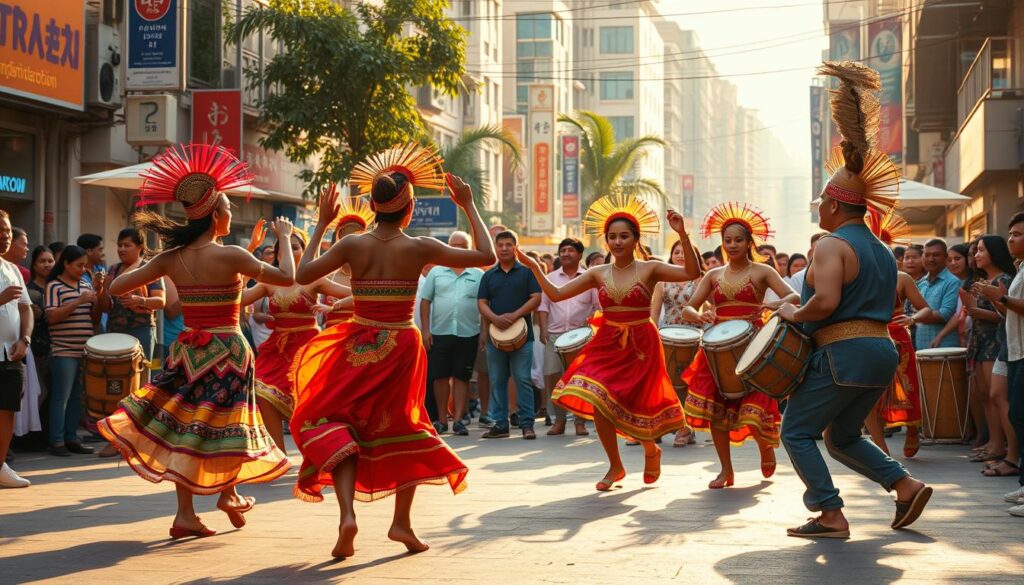
Symbolic Movements and Community Stories
Performers reenact marital traditions through choreographed exchanges of handwoven textiles. Dancers mimic dowry negotiations using rhythmic gestures, their steps mirroring the “sibug-sibug” motion—forward, backward, and sideways shifts symbolizing life’s unpredictable currents.
Healing rituals take center stage during twilight performances. Tribal elders guide actors through smoke purification ceremonies, waving herbal bundles to cleanse spiritual energies. These acts honor medicinal traditions preserved through oral histories.
| Ritual Element | Key Components | Cultural Purpose |
|---|---|---|
| Wedding Dance | Textile exchanges, bolos as dowry symbols | Preserving social customs |
| Healing Act | Herbal smoke, chanting circles | Spiritual renewal |
| Warrior Procession | Bamboo shields, synchronized stomping | Historical remembrance |
Local artists collaborate with indigenous groups to create floats shaped like traditional boats. These mobile artworks carry floral arrangements symbolizing the region’s coastal ecosystems. A tribal leader notes: “Our dances teach resilience—how ancestors adapted to challenges while keeping traditions alive.”
Through these vibrant displays, communities strengthen intergenerational bonds. Youth learn ancestral dialects by memorizing chants, while elders share stories through costume designs. This living heritage transforms public spaces into classrooms of cultural pride.
Spectacular Trade Fairs and Oyster Grill Competitions
Coastal aromas mingle with marketplace chatter as visitors explore rows of handcrafted goods and sizzling seafood. The province’s trade fairs serve as economic engines, connecting over 200 local artisans with buyers from across Mindanao. Woodcarvers from Titay display intricate furniture, while weavers from Kabasalan showcase mats dyed with mangrove extracts.
Longest Oyster Grill Record Attempts
In 2004, Zamboanga Sibugay made global headlines by grilling oysters across 1.2 kilometers of shoreline—a Guinness World Record attempt. This feat highlighted the region’s marine wealth, using 18,000 pieces from Kabasalan’s farms. A 2007 follow-up stretched the grill to 1.5 km, further cementing its status as the Philippines’ oyster capital.
Showcasing Local Culinary Delights
Kabasalan’s specialty oysters—plump and briny from nutrient-rich waters—steal the show. Chefs demonstrate five cooking methods during live demos:
- Chargrilled with calamansi and chili
- Steamed in coconut milk with lemongrass
- Fried in crispy batter with local spices
Beyond oysters, food stalls offer sinuglaw (grilled pork with ceviche) and puto lanson—purple rice cakes from indigenous recipes. These flavors draw 15,000+ daily visitors during peak days, boosting vendor incomes by 300%.
“Our grills don’t just cook food—they simmer with stories of coastal resilience.”
Sports, Competitions, and Entertainment Highlights
Engines roar as crowds cheer along dirt tracks where local riders showcase gravity-defying stunts. This adrenaline-fueled energy defines the festival’s competitive spirit, blending traditional celebrations with modern thrills. From sunrise motocross races to midnight dance battles, the events create a non-stop spectacle.
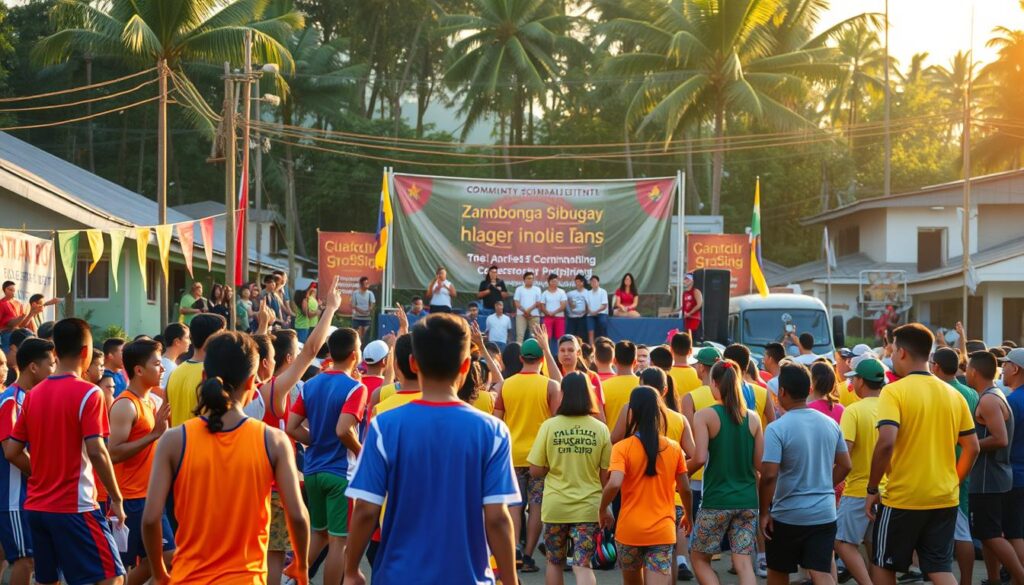
Thrills on Wheels and Court
Motocross draws top riders from across Mindanao, navigating obstacle courses that mimic Zamboanga Sibugay’s rugged terrain. Basketball tournaments ignite neighborhood rivalries, with championship games often decided in overtime. These competitions boost local pride while attracting scouts from regional sports leagues.
Youth-driven activities keep the energy fresh. Zumba marathons transform plazas into open-air dance studios, with hundreds moving in unison to remixed folk tunes. Talent shows spotlight emerging singers and comedians, while beauty pageants celebrate cultural ambassadors through traditional costume rounds.
| Event Type | Participants | Community Impact |
|---|---|---|
| Motocross | 150+ riders | Boosts tourism revenue |
| Basketball | 32 barangay teams | Strengthens local bonds |
| Zumba | 500+ daily attendees | Promotes health awareness |
These activities complement the sibug-sibug festival’s cultural core. As one athlete noted: “We compete not just for trophies, but to honor our province’s fighting spirit.” The events culminate during the founding anniversary week, uniting generations through shared triumphs.
Colorful Parades, Floats, and Festival Marches
As dawn breaks over Ipil, artists and volunteers gather to transform ordinary trucks into moving masterpieces. Float construction begins months in advance, with teams using recycled plastics, dyed abaca fibers, and thousands of fresh flowers. Each design reflects specific cultural themes—from maritime traditions to agricultural milestones—through intricate sculptures and light installations.
Local governments and schools compete in friendly rivalries to create the most impactful displays. A recent winning float depicted a 12-foot bamboo boat overflowing with oyster shells, symbolizing the province’s coastal prosperity. Community groups incorporate ancestral patterns into their designs, often consulting tribal elders for historical accuracy.
“Our floats carry memories. Every seashell placement honors fisherfolk who shaped our shores.”
The grand parade unites over 3,000 participants annually. Marchers wear coordinated costumes representing their barangay’s unique identity, while drumlines set the pace for synchronized dances. Key elements in recent processions include:
| Float Theme | Materials Used | Cultural Significance |
|---|---|---|
| River of Life | Recycled glass, LED strips | Tribute to Sibuguey River |
| Harvest Abundance | Dried rice stalks, coconut husks | Agricultural heritage |
| Coastal Guardians | Driftwood, fishing nets | Marine conservation |
These mobile artworks spark conversations about shared history. Families line streets hours early, cheering as their community’s float passes by. The event’s visual spectacle strengthens bonds while educating younger generations about regional legacies.
The Legacy of Zamboanga Sibugay and Its Oyster Capital
Zamboanga Sibugay’s coastal waters nurture treasures that have put it on the global map. Beyond cultural celebrations, the province thrives as the Philippines’ oyster powerhouse. Its briny delicacies and ambitious culinary feats define a legacy intertwined with community pride.

Guinness World Record Attempts and Milestones
In 2004, the province grilled 18,000 oysters across 1.2 kilometers of shoreline—a bold bid for global recognition. This spectacle drew international media, highlighting Kabasalan’s marine wealth. A 2007 follow-up stretched the grill to 1.5 km, using bamboo platforms to showcase sustainable practices.
| Year | Event | Impact |
|---|---|---|
| 2004 | First Guinness attempt | 40% tourism increase |
| 2007 | Extended grill challenge | UNESCO feature story |
| 2019 | Oyster farming expansion | 15% livelihood growth |
These events transformed local festivals into economic catalysts. A fisherfolk leader shared: “Our grills sizzle with stories—each oyster represents years of coastal stewardship.”
The Renowned Oyster Varieties of the Province
Kabasalan’s oysters thrive in nutrient-rich estuaries, growing 30% larger than national averages. Three varieties dominate:
- Kapangaan – known for sweet, creamy flesh
- Tinagong Dagat – extra meaty texture
- Sinubli – distinct briny flavor
Harvested daily at low tide, these mollusks star in dishes from garlic butter grills to coconut milk stews. The founding anniversary celebrations feature oyster-shucking races, where experts clean 100 pieces in under 3 minutes.
Today, 65% of coastal families rely on oyster farming. Their success fuels both cultural events and sustainable tourism, proving tradition and progress can flourish together.
Navigating the Historical Roots of Zamboanga Sibugay
Spanish explorers first documented settlements along the Sibuguey River in 1667, noting thriving coastal communities. These early records reveal a region rich in natural resources, strategically positioned for trade routes. For centuries, shifting colonial administrations shaped its identity before modern borders emerged.
From Colonial Times to the Creation of the Province
The area evolved through three key governance phases. Initially part of the Moro Province established in 1903, it later became a district of Zamboanga del Sur in 1952. Local leaders campaigned for autonomy for decades, culminating in Republic Act No. 8973’s passage in 2000.
This legislation carved out Zamboanga Sibugay as Mindanao’s 79th province. A 2001 plebiscite saw 92% voter approval, finalizing its separation from Zamboanga del Sur. The move empowered communities to preserve cultural practices while pursuing economic growth.
| Year | Milestone | Significance |
|---|---|---|
| 1667 | First Spanish records | Earliest written history |
| 1903 | Moro Province creation | Colonial administration |
| 2001 | Provincial establishment | Self-governance achieved |
Today, annual celebrations honor this journey from colonial outpost to autonomous province. Cultural events blend indigenous traditions with nods to historical turning points, creating living bridges between eras.
Travel Tips: Reaching Zamboanga Sibugay with Ease
Planning your journey to this cultural hotspot requires smart navigation choices. Most visitors arrive via Zamboanga International Airport, which connects to major cities like Manila and Cebu. From there, air-conditioned buses depart hourly for Ipil—the festival’s main venue.

Flight, Bus Routes, and Local Transportation Options
After landing, head to the bus terminal near the airport. Ride a Rural Transit or Weena Express coach for the scenic 3-hour trip to Ipil. These buses offer reclining seats and onboard Wi-Fi, with fares starting at ₱220 ($4).
Local transport shines with color-coded tricycles. These three-wheelers charge ₱15-₱30 ($0.25-$0.50) per ride within Ipil. For remote festival sites, rent a habal-habal (motorcycle taxi) or book a Grab car through the app.
| Transport Type | Route | Duration | Cost |
|---|---|---|---|
| Airplane | Manila to Zamboanga City | 1h 45m | ₱2,500+ ($45) |
| Bus | Zamboanga City to Ipil | 3h | ₱220 ($4) |
| Tricycle | Ipil Terminal to Festival Grounds | 10m | ₱20 ($0.35) |
“Book return bus tickets early—seats fill fast during peak festival days.”
Ferries from Cagayan de Oro or Dapitan offer alternative routes. These overnight trips dock at Port Sibuguey, 45 minutes from Ipil by van. Pair this with a sunrise view of the Sibuguey River for an unforgettable arrival.
Local Cuisine and Festival Delicacies
Aromas of charcoal-grilled seafood and coconut-infused treats guide visitors through crowded festival lanes. The province’s culinary scene shines brightest during celebrations, where generations-old recipes meet creative twists. Food becomes a universal language here, uniting farmers, fisherfolk, and travelers over shared plates.
Must-Try Foods and Street Snacks During the Festivities
Kabasalan’s oysters dominate menus with three signature preparations:
- Sinugba – grilled over coconut husks with lime dipping sauce
- Ginataan – simmered in spiced coconut milk with turmeric
- Kilawin – marinated raw in vinegar and chili
Beyond the briny stars, these street snacks draw constant queues:
| Dish | Key Ingredients | Cultural Roots |
|---|---|---|
| Puto Lanson | Purple yam, sticky rice | Subanen tribal recipe |
| Sinuglaw | Grilled pork, fish ceviche | Coastal fusion dish |
| Binaki | Sweet corn, banana leaves | Bukidnon influence |
“Our dishes tell stories – the chili represents resilience, coconut milk signifies community unity.”
Night markets feature kakanin (rice cakes) shaped like sea creatures, while drink stalls serve sikwate – thick chocolate paired with salted fish. These flavors create edible bridges between land and sea traditions, making every meal a cultural immersion.
Economic Impact and Tourism Boost of the Festival
The annual celebrations in Zamboanga Sibugay generate more than cultural pride—they spark significant economic momentum. Local businesses report a 65% revenue surge during event weeks, with coastal towns like Kabasalan benefiting most. Hotels and homestays near Ipil operate at full capacity, creating seasonal jobs for residents.
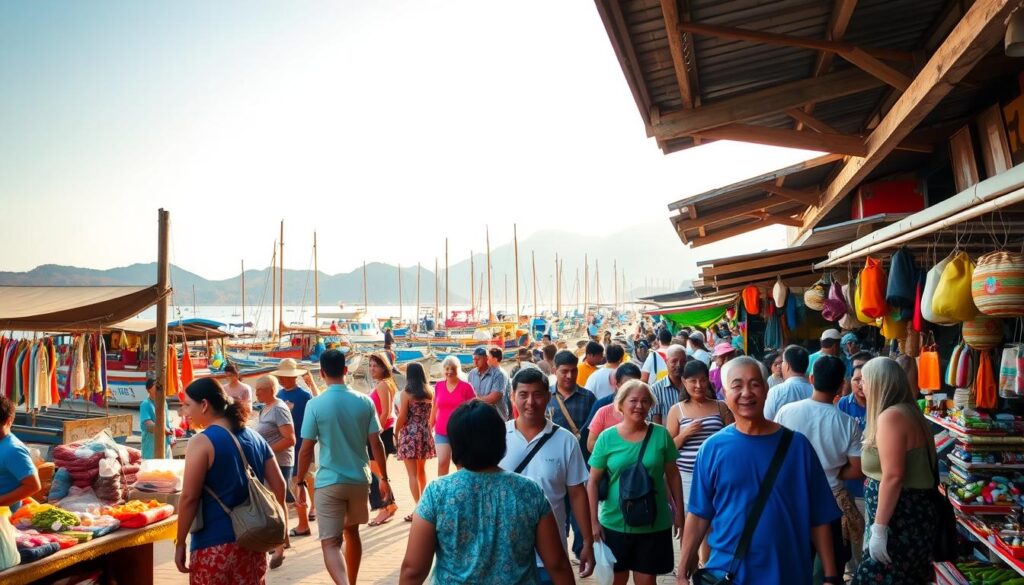
Enhancing Community Livelihoods Through Celebrations
Artisans from neighboring provinces like Zamboanga del Sur join trade fairs, expanding market reach for handwoven textiles and woodcarvings. A 2022 survey showed 40% of vendors doubled their monthly income during festival weeks. Cooperative-led oyster farms see 300% order increases as restaurants stock up for visitors.
Key initiatives drive sustainable growth:
- Free craft workshops for emerging entrepreneurs
- Tourism department partnerships with ride-sharing apps
- Digital payment training for street vendors
| Year | Economic Growth | Key Driver |
|---|---|---|
| 2019 | 25% revenue increase | Oyster grill record attempt |
| 2022 | 40% vendor participation rise | Mobile booking systems |
| 2023 | 55% tourism job creation | Homestay certifications |
“Last year’s sales funded my children’s school supplies—this event changes lives.”
Regional airports report 30% higher passenger traffic each February. This influx supports transportation workers and boosts demand for local guides. The celebrations prove culture and commerce can thrive together, creating lasting benefits beyond festival dates.
Community Involvement and Local Pride
From fishermen to schoolteachers, every resident becomes a storyteller during the province’s brightest celebration. Over 80% of event activities rely on volunteer efforts, with planning committees forming months in advance. Barangay leaders coordinate costume workshops, while students design parade props using recycled materials.
- Artisans crafting intricate floats depicting coastal legends
- Performers rehearsing ancestral dances in community centers
- Elders teaching traditional chants to youth groups
- Vendors preparing heritage recipes for food fairs
The agro-industrial fair becomes a living resume of local skills. Farmers display organic produce beside weavers demonstrating backstrap loom techniques. A seafood vendor shared: “My stall isn’t just business—it’s my family’s history on display.”
| Participant Group | Contribution | Impact |
|---|---|---|
| Youth Organizations | Parade choreography | Preserves dance traditions |
| Senior Citizens | Oral history sessions | Shares pre-colonial knowledge |
| Cooperative Groups | Handicraft sales | Boosts household incomes |
This shared effort strengthens community bonds. Neighbors who rarely speak during the year collaborate on float designs. The celebration becomes a mirror reflecting their collective identity—vibrant, resilient, and united.
Conclusion
As the sun sets on February’s vibrant gatherings, Zamboanga Sibugay leaves visitors with lasting memories of unity and heritage. This annual celebration weaves together coastal rituals, historical milestones, and modern creativity into a cultural masterpiece.
From its river-inspired origins to ambitious rebranding efforts, the event mirrors the province’s journey toward self-definition. Traditional dances and oyster feasts highlight ancestral wisdom, while sports competitions showcase contemporary energy. Each activity reinforces community bonds and drives economic growth through tourism.
Travelers find seamless access via regional transport hubs, with accommodations ranging from beachfront cottages to urban homestays. Local flavors like coconut-glazed oysters and handcrafted souvenirs create authentic connections.
Mark your calendar for next year’s founding anniversary festivities—a living showcase of resilience and pride. Witness how cultural traditions fuel progress, and leave with stories as rich as the Sibuguey’s currents.

